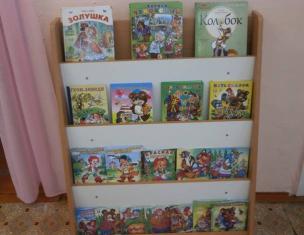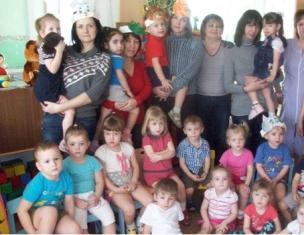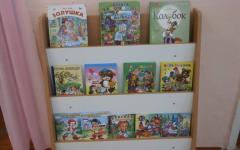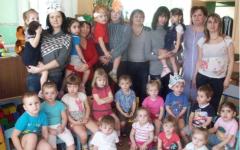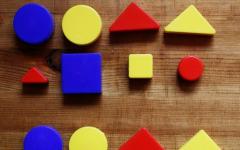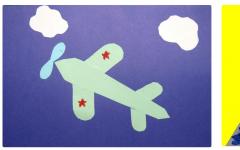Fizkultminthki and their meaning
According to scientists, physiologists, educational activities require a large nervous tension from children. During the immediate educational activities in preschoolers of any age, there are significant loads of their vision organs, hearing, muscles of hands and all torso, often long-held in a static position. External manifestations of fatigue are loss of interest and attention, weakening of memory, reduced performance. Some children have excessive mobility replaced by lethargy: they begin to turn away from the educator, sneeze, yawning, to talk with each other. The slightest signs of the behavior of kids, similar to those listed, are an obvious signal for the educator that the children urgently requires Fizkultminutka!
Physicalatural minutes are the necessary component of any direct educational activity in the Dow, regardless of the age of children.
This methodological development will help caregivers to understand the significance of physical cultural minutes for preschoolers, make them a card file to the proposed classification. Also here are various types of physical attacks and approximate planning for their learning with children.
Value of physical attacks for preschoolers
Any direct educational activity that is not associated with the movement is a heavy load on the organism of preschoolers, since they are characterized by the instability of nerve processes. They are quickly tired, the stability of attention is reduced, children lose interest in activities that, of course, adversely affects its effectiveness.
Obviously, adults must warn the occurrence of fatigue in the kids, to promptly discover signs of its appearance and as soon as possible, it is more efficient to remove them, since fatigue, accumulating, can grow into overwork and cause various nervous disorders. Each tutor should know that signs of fatigue in children 3-4 years old appear after 7-9 minutes of direct educational activities, in children 5-6 years old - after 10-12 minutes, in 7-8 years - after 12-15 minutes! Fatigue can manifest itself in different ways: yawn, scattered attention, distractions, irritability, appearance of involuntary movements, violation of posture and coordination of movements. One of the most effective ways of preventing fatigue, improving the overall state of children, the change of their activities is considered short-term exercise, the so-called physical attacks. They remove the muscle tension caused by a fixed state, switch attention from one activity to another, soothes the nervous system and restore the health of children.
Fizkultminutki in Dow, as a rule, are carried out in about the middle of the direct educational activities within 1-2 minutes in the form of gaming actions. It is not necessary to carry out only one physical attachment, the greater effect will be from a combination of physical attacks of various types. But do not get drunk and do not exceed the time limit! Children like simple exercises accompanied by verses and, if possible, related to the theme and content of activities. The main thing is that movements were simple, accessible and interesting to each child, they must be quite intense, affect many muscle groups, but not be excessive.
Cheerful physical attacks can be used in working with preschoolers from early age. They have a positive effect on the activity of the brain, activate the cardiovascular and respiratory system, improve the blood supply to the internal organs and the working capacity of the nervous system. Fizkultminutka is one of the mandatory, thoughtful elements in direct educational activities. It is necessary and important, it is the "minute" of an active and healthy rest. Fizkultminutka - it's fun, interesting and useful!
Fizkultminok classification
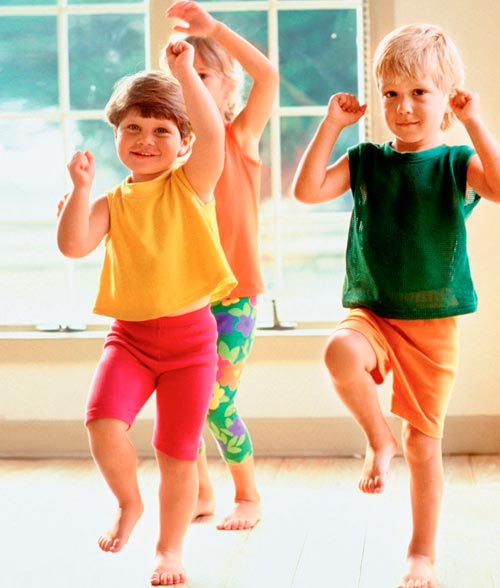 Fizkultminutka
- These are funny exercise aimed at removing fatigue. But what is fatigue? What is tired in children now? What kind of physical attachment will bring the greatest benefit? Answers to these issues, caregivers must know before to offer the physical attacks to children.
Fizkultminutka
- These are funny exercise aimed at removing fatigue. But what is fatigue? What is tired in children now? What kind of physical attachment will bring the greatest benefit? Answers to these issues, caregivers must know before to offer the physical attacks to children.
Different physical attacks countless. In our time, they can be found in a large number of books presented on the shelves of bookstores, and on the Internet. But do not forget that the choice of the most effective suitable for your children is now the physical attacks depends on what kind of activity you are doing at this time with preschoolers, because surely all the educators will agree with me that it depends on this, in what form of recreation, in What kind of physical attacks kids need most!
I hope that the presented classification will help my colleagues, caregivers, to create a card file of physical attacks in various kinds and apply them to work with preschoolers. If desired, it is possible to form a card file otherwise, separating the physical attacks into groups used in various types of direct educational activities.
1. Fizkultminthki - warm-ups (engine - speech)
Motor-speech physical attachments give rest to various muscle groups, activate the activity of the brain, cardiovascular and respiratory system, improve the blood supply to the internal organs. In addition, they help adults develop in preschoolers coordination of movements, stimulate the development of speech skills, activate memory, attention, develop creative imagination.
Children really like to perform uncomplicated movements for rhythmic, easily memorable verses. In my work, I arouse new physical attacks - warm-ups no more than two per month, trying to do it during the morning gymnastics, for walks, etc., so that during the immediate educational activity all the children knew and performed the movements, words were pronounced.
2. Eye exercises.
Load on the eyes of a modern child is huge. It is television with its 24-hour children's channels, and a computer, a cell phone, and other entertaining technical "things, without which a modern little man does not think their lives. And relax the eyes of the child only during sleep. Therefore, the gymnastics for the eyes is useful for children of any age in order to prevent violations of vision. Do prophylaxis and you do not allow visual fatigue!
It is very interesting to children electronic physical attacks for the eyes. This is the gymnastics for the eyes prepared in advance with the help of computer technologies. For example, the attention of preschoolers is presented on the monitor with a table with pictures. A butterfly is sitting on the edge of the table, which flies with each click from one picture to another. Children watch her eyes and call pictures to which the butterfly lands. Most often, caregivers independently make various visual tables or use a variety of eye exercises.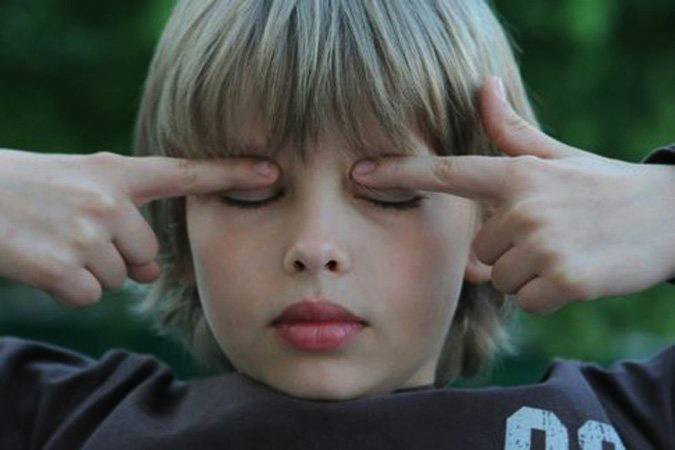
Senior children can be resting their eyes without getting out of place, look up, down, right, left, draw the circle or the first letter of your name. But younger children are much more interesting if the exercises will be accompanied by poetic text.
3. Finger gymnastics.
For preschoolers, hold in the hands of a pencil or a brush - a big job. They squeeze their fingers very tightly, believing that the stronger they keep them, they would have a drawing, numbers or letters. As a result, the small muscles of the hand and the brush quickly get tired and require relaxation. What can help in this case? The best physical attachment in such a situation is the finger gymnastics.
4. Relaxation exercises
It is known that with emotional tension, when the child is strongly excited, excited, depressed, there is an excessive tension in individual groups of muscles. Alone, children cannot get rid of this tension, begin to be nervous, which leads to the tension of new muscle groups. Children need to be learning to feel this tension, change its degree or shoot at all, relaxing certain muscle groups. When relaxing muscles, emotional tension weakens or disappears at all. Relaxation technique "Voltage-Relaxation" is the best way to learn to recognize existing voltage in muscles and get rid of them.
End of form
Copyright Mycorp © 2016


